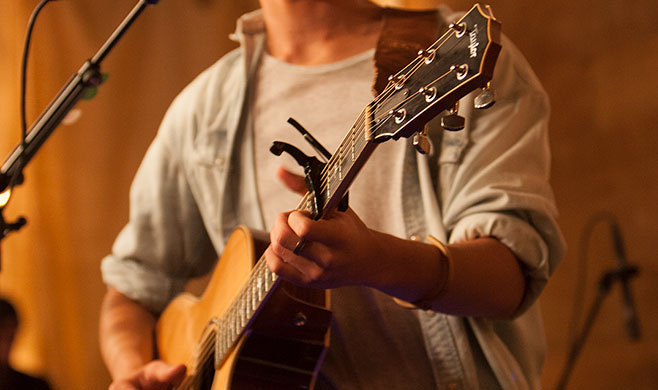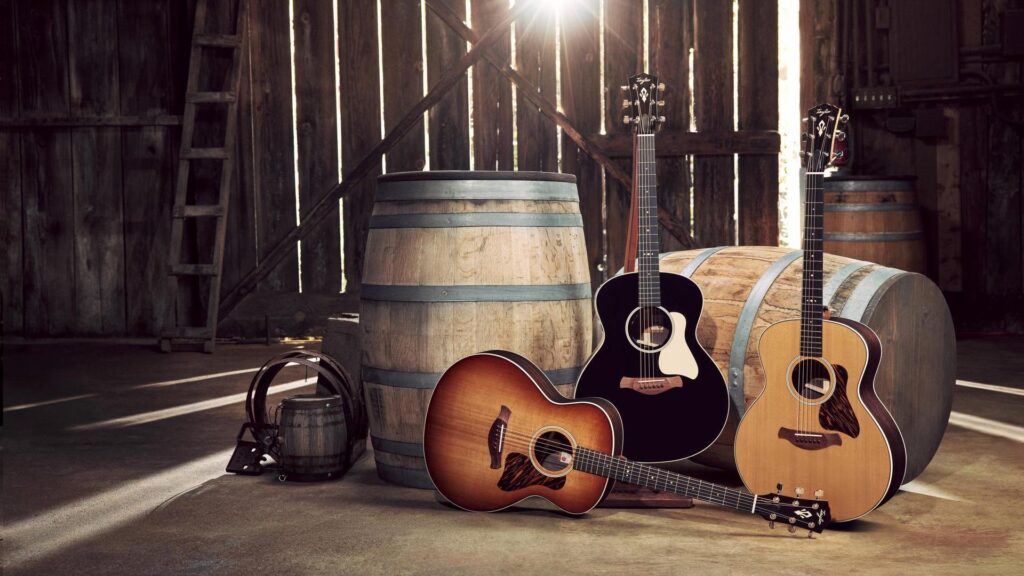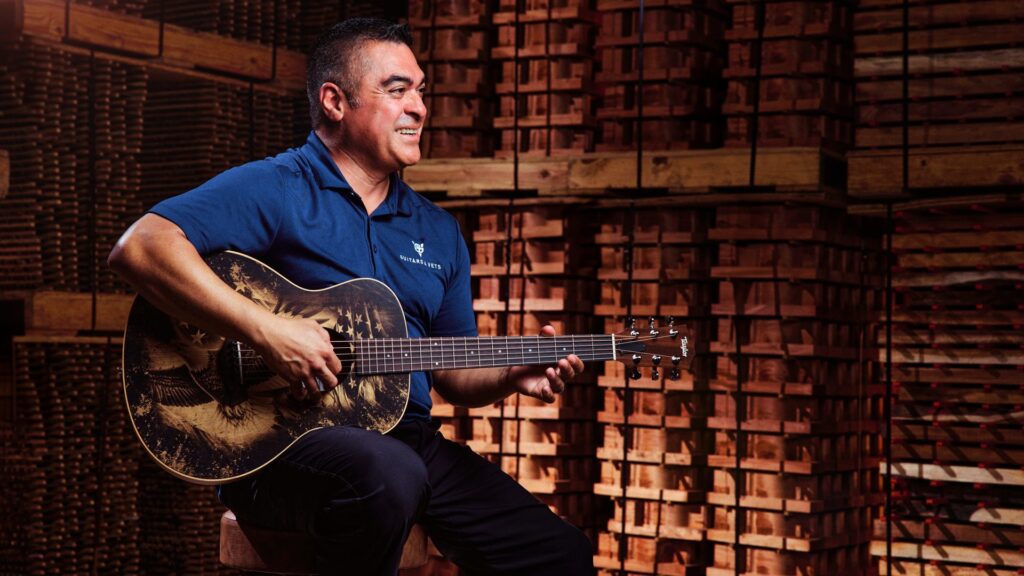Volume and sustain are two of the most sought-after characteristics of acoustic guitar tone. Guitar builders and players have devoted years of research to improving both traits, either by changing the design of the instrument or by using external devices to make their guitars louder and their notes last longer. When you walk into a music store and ask about guitars, chances are the salesperson will describe both volume and sustain as it pertains to the guitar in question.
The trouble is, volume and sustain exist on a spectrum together. Both traits are defined in large part by the guitar’s soundboard, or its top. When a string is struck, the vibration energy is transferred into the top wood, which is primarily responsible for pushing the sound that we hear from the guitar. Beneath the top is the bracing, which helps to shape the guitar’s voice by defining how the top vibrates. Traditionally, luthiers have used bracing to adjust the flexibility and stiffness of the top, looking for the sweet spot that produces the best possible blend of volume and sustain.
Because of the mechanics of wave physics, these are opposed qualities—when you boost one, you usually diminish the other. Here’s how volume and sustain work and why the structure of the guitar affects their interaction.
Volume
In simple acoustic guitar terms, volume is a product of the guitar’s vibration. In the case of acoustic guitars, most, but not all, of that vibration comes from the guitar’s top. The top must be flexible enough to vibrate freely, but strong enough to maintain the structure of the guitar.
Volume increases happen when the string’s vibration energy travels through a flexible material like a guitar top. Other instruments use surfaces that are even more flexible, such as the drum head on a banjo. However, since the surface of a banjo is so soft, the energy from the string’s vibration is almost immediately absorbed. It dissipates quickly, and the notes disappears with little to no sustain. That’s where rigidity comes into play.
Sustain
Sustain is a deceptively simple term used to describe a complex idea when it comes to building guitars. In short, sustain refers to the length of time a note audibly resonates. It’s also similar to volume in that sustain is a function of the guitar’s structure. However, sustain comes from rigidity rather than flexibility.
In order for a note to sustain past its initial attack, the string must continue to vibrate and push sound waves into the guitar body. For that to happen, the material of the instrument must be dense and rigid enough that it doesn’t begin to vibrate along with the string. When that energy is allowed to transfer into the top and body woods of the guitar, the string loses vibration, and the note fades.
That’s why you’ll hear such amazing sustain from heavy, dense instruments. For example, the Les Paul electric guitar is known for its incredible sustain largely because its heavy, solid wood body doesn’t absorb the vibration of the strings. All that energy and movement remains in the strings, allowing you to hold that note for what feels like forever. However, the string produces almost no volume in this case. That’s why electric guitars require amplification in order to be heard.
Read more about how guitars are voiced through bracing and tonewoods.
V-Class Bracing: Where Volume and Sustain Diverge
In early 2018, Taylor Guitars introduced V-Class bracing, a new bracing system designed by master guitar designer Andy Powers that effectively resolves the forced compromise between volume and sustain in acoustic guitars. By providing support along the direction of the strings while allowing the sides of the top to flex more freely, V-Class bracing revoices the guitar top for a much-improved sound. The new rigidity of the guitar’s center line keeps more energy in the strings, causing them to vibrate longer and sustain better before fading out. Likewise, the improved flexibility across the soundboard allows the top to vibrate with more power, which generates louder volume.
Read more about how V-Class bracing enhances a guitar’s volume and sustain here.



























